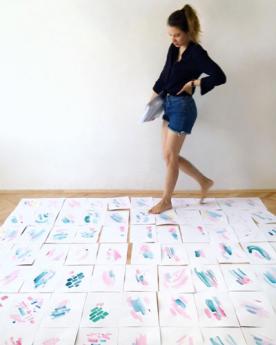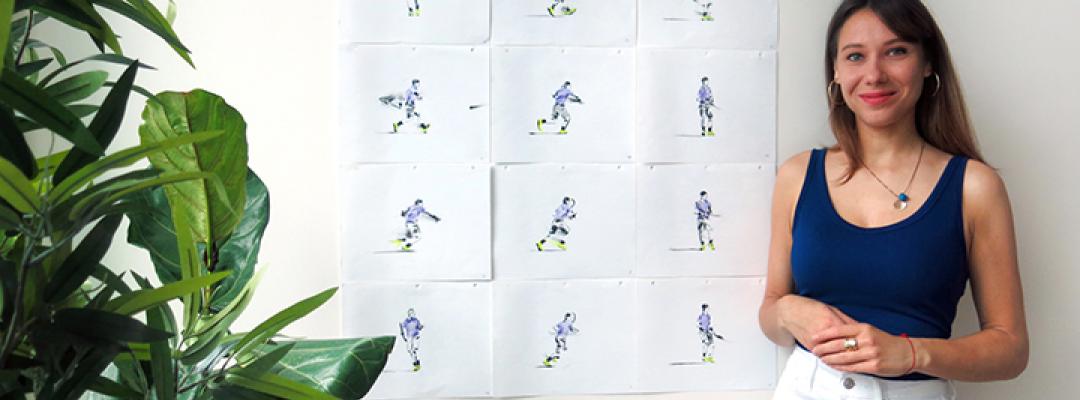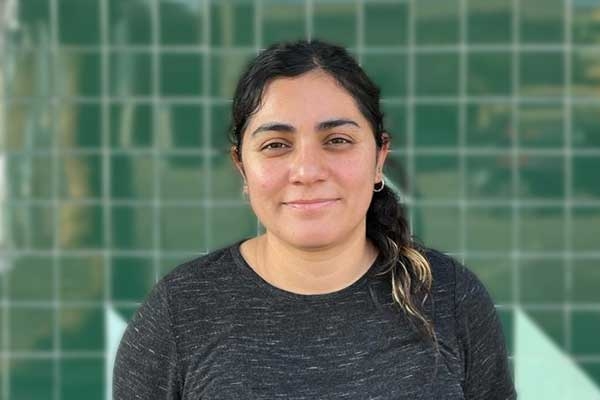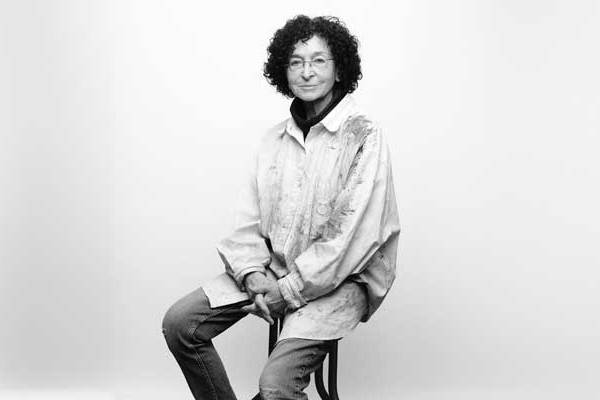Animation instructor Iveta Karpathyova finds the merging of design and movement and storytelling an exhilarating combination. She had been drawn to art, fashion and dance throughout her schooling, and eventually established herself in a graphic design career in Paris after receiving a degree in fashion communication. Looking for new challenges, she pursued a master’s degree in design from OCAD University.

Animation instructor Iveta Karpathyova at work

New Creative Challenges
Her initial impetus for the master's degree was to teach, but Iveta found the intense engagement in her thesis work, “game-changing.”
How? With the support of her amazing advisers, Iveta learned new skills in order to transition from graphic design to animation, including the practicalities of animation (timelines, After Effects software, frame rates, animation techniques, etc.).
“As an illustrator and graphic artist, I was trained to refine one concept—being detailed and controlled in execution until the final design is achieved,” she explains. “As an animator, I had to let go of this workflow and embrace the temporality of my drawings, focusing on rendering the rhythm, movement, timing and distortion/stylization of figures that come with creating an engaging animation design, and ultimately, making something come to life.”
Rhythm and Dance
Iveta’s dance experience merges seamlessly with her animation.
“Arts that are connected to rhythm—such as animation, music and dance—have so much in common,” she explains. “Dance trains you to develop an attunement to timing and pacing, which is so important when I’m drawing figures in movement, rendering their speed and momentum.”
In fact, Iveta was able to combine these two pursuits in her award-winning animated short, Phases of Dance. To complete this film, she drew up to 100 frames per day, culminating in more than 2,100 individual drawings. She used the rotoscoping technique to transform her own dance steps into film. Her creation has been screened internationally.
Passing Along a Passion
Her thesis studies gave her the time to complete such a large work, as well as endowing her with the qualifications and knowledge to teach art and animation. Her own teachers provided her with a sense of purpose and inspiration to create, and she wanted to do the same with others.
“I believe that when it comes to the arts,” Iveta shares, “the world would be a much more creative place if we shared our craft and skills more openly with other communities and with those who want to learn. You can teach one technique to 10 designers, and the beauty is that each will create something so different that’s authentic to their own creativity, workflow and interests.”
Iveta’s 5 Tips for Transitioning Into a Design Career
- Take a course. Watch online tutorials and experiment.
- Break down and analyze campaigns, videos and animation that you like.
- Create projects for your dream clients in your downtime.
- Put your work out there for the world to see.
- Hang out with other creatives and seek feedback.
She recently taught our Animation Design and Video Production course, and found that the experience prompted her to keep on top of the latest trends in the field.

Iveta also appreciates how hard her students work, and loves watching how each student applies their existing strengths and viewpoints to their design thinking. She has a long list of animation practicalities that she ensures her students master, including keyframing, storyboarding, animatics, camera angles and VO synchronization.
Iveta also wants to ensure that her students learn how to use those skills in the design workplace. “I try to communicate how to use and leverage those skills in real-life settings when collaborating with clients or art directors,” she asserts. “It’s important to understand the value of your skills.”
As we continue to evolve into a more image-centric model of information gathering, animation skills will continue to be in high demand. Plus, as Iveta has shown in her career and art, animation brings ideas and imagination to life.
Create your own design career with the Professional Program in Graphic Design or the Professional Program in UX Design.



